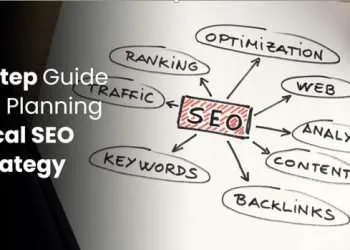Responsive web design creates web pages that automatically adjust for different devices and screen sizes. A Boston-based web designer Ethan Marcotte introduced the concept in 2010 and revolutionized the way websites interact with visitors. Today, most websites have responsive web design, and many web designers and professional SEO services providers are using the process to create websites.
The number of people using mobile devices to browse the web has been rising over the years. A Perficient study shows mobile devices accounted for 68.1 percent of all website visits in 2020, whereas it was 63.3 percent in 2019. Website developers must consider the different devices people use to access the internet and use responsive web design to adapt the site’s content to the different screen sizes.
As per a study, 82 percent of the top 100 Alexa websites use responsive web design. In another one, 73.1 percent of web designers opine that a non-responsive design drives away visitors from a website. In this context, let’s discuss the 10 benefits of responsive web design in SEO.
- Generates more mobile traffic
Responsive web design makes web pages adapt and adjust to various devices, including mobiles, tablets, desktops, or laptops. As per GSMA’s The State of Mobile Internet Connectivity Report 2020, over half the world’s population using mobile devices to browse the internet. A responsive web design will enable you to optimize your website for mobile devices. Mobile-friendly web pages will generate a lot more traffic from mobile users, which will enhance your SEO ranking.
- Faster loading of web pages
In 2018, Google launched its speed update and made web page loading speed a major ranking factor in SEO and mobile search. Responsive web design will enable you to tinker with your website’s content, layout, and design. It will reduce the size of the web pages and make them easier to load on smartphones, tablets, desktops, and laptops. This will provide a superior user experience to your website visitors irrespective of the devices they are using.
- Improves site’s design and usability
Responsive web design enhances a website’s design and functionality by adapting the content to all devices. Responsive websites automatically adjust to the screen by checking a screen’s size, and it doesn’t need developers to create different layouts. This results in greater user engagement and enables them to make informed decisions. Apart from enhancing SEO score, it also optimizes development time and cost and increases productivity.
- Provides better UX
As per a Forrester Research study, a good user interface can boost conversion rates between 200 percent and 400 percent. And now, Google has made the user experience one of its key ranking factors. Responsive web design gives a far superior user experience to website visitors irrespective of the device they use. It enables visitors to navigate a website smoothly and effectively and pays attention to every small detail and process to improve user experience.
- Decreases bounce rate
Bounce rate represents the percentage of users who enter a website and leave before viewing other pages in it. This is one of the important ranking factors as Google observes the amount of time users spend on a website and uses the information to determine a webpage’s relevance for a specific search query. A high bounce rate results in reduced rankings. Responsive web design reduces the bounce rate by loading the web pages faster and optimizing the content and design for all devices.
- No duplicate content
In the early days of the mobile internet, many website owners designed mobile versions to enable mobile users to access them. But when search engine bots crawled the web pages and indexed the content, they found similarities in content. This often led to duplicate content issues and penalties from search engines. Responsive web design enables you to use one URL for all versions of your website that fits all screen sizes and layouts. All the content will be on one domain. This makes link-building simpler and enhances the SEO score.
- Cost-effectiveness
As discussed above, a website owner does not have to create two separate websites by using web design responsiveness. This boosts the cost-effectiveness of a business and enables it to invest the money elsewhere.
- Increased social sharing
Though social media presence and performance do not determine SEO rank, it plays a key role in SEO campaigns and marketing strategies. Your website may have great content that visitors may want to share but what if they can’t find the share button? Or, a laptop user shares a link with a mobile user, but the web page is unresponsive. This will cost you a lot of potential customers and website traffic. But responsive web design enables website visitors to access the content using their mobile devices and personal computers and share it on their social media profiles. This increases your chance to reach a wider audience and enhances your SEO performance.
- Backlink building
Backlink building is one of the main factors in SEO. The more backlinks a website has, the higher is its domain authority as well as its popularity. But when a business has two websites, one for mobile and another for PC, it confuses bots and causes them to split the backlinks. This weakens the authority and value of the websites. Using responsive web design will enable you to have one domain, and the backlinks will remain strong.
- Optimize for Google’s Mobile-First Index
To index and rank websites, Google’s Mobile-First Index uses the site’s mobile version. The websites that run well on mobile devices perform well in indexing and ranking. Many website owners are switching to responsive mobile design to optimize for Google’s Mobile-First Index.
Summing up,
With many internet users using different devices to browse the web and preferring fast search results, creating a well-optimized and user-friendly website is extremely important today. A responsive web design provides a strong foundation for well-designed content and an excellent user experience.
















